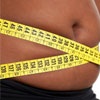
“59% of healthy school-age children, followed through maturity, experienced low back pain by the time they reached 18-19 years old. At the outset of the investigation, when they were 7 to 8 years old, 9% of the children had reported experiencing low back pain, showing a clear increase in prevalence.” This quote comes from a presentation given by Dr Teija Lund (ORTON Orthopaedic Hospital, Helsinki) at the 14th Congress of the European Federation of National Associations of Orthopaedics and Traumatology (EFORT) in Istanbul last year, where the troubling idea of our children having low back pain (LBP) came under the spotlight.
Why on earth would an otherwise healthy child have LBP? As National Physiotherapy BackWeek approaches, it’s worth thinking about what might put your child at risk.
Why kids have lower back pain
“Serious pathology as a cause of LBP in school-children is uncommon,” says Fran Theron, of the SASP (South African Society of Physiotherapy) Paediatrics Special Interest Group. LBP seems to increase as puberty looms; it’s more common in girls than in boys, and presents earlier in girls, adds Theron. “There is an association between LBP and the number of hours per week the teenager spends in front of the TV or doing computer work,” she says. 15 is the magic number: more than that, and the adolescent is at greater risk of LBP.
The reason for this could be poor posture while sitting in front of a screen; but it could also be simply because the child has low levels of physical activity. “Those who do not participate in sporting activities may demonstrate muscle atrophy and decreased muscle endurance, which could be a possible cause of LBP.,” says Theron. Their muscles have, in effect, weakened because they’re not getting enough exercise. “Regular participation in sports appears to be protective against LBP in adolescents, with regular performance of non-strenuous physical activity important for trunk muscle strength and endurance.” The child or teenager who gets outside for hours of play every day, running and climbing and kicking balls and using bats, is likely to have stronger muscles in the back and the stomach, as well as better flexibility.
Physical activity is important
“Physical activity during adolescence and growth builds trunk strength and endurance and may improve the development of the low back musculature structures which may facilitate optimal low back function,” Theron says. She adds a warning: don’t let your child overdo it. Youngsters who are obsessive about sport can put themselves at higher risk. “The risk of injuries increases when the frequency of training is more than 10 hours a week.”
So adolescents would be better off not becoming gym bunnies. “Regular, daily activity, from walking to swimming to dancing to running around at play, is all it takes to help your child avoid LBP,” says SASP President Linda Steyn.
Get your child assessed for LBP during National Physiotherapy BackWeek: to find out more, contact the SASP Head Office on 011 615 3170.
Read more:
Moderate exercise helps prevent back pain
Top 10 tips on back pain
Bed rest can cause back pain




 Publications
Publications
 Partners
Partners











